Common Kansas City Wood Rot Issues and Their Prevention
Each year, we fix lots of wood rot on customers homes. We’re going to look at what the most common fixes we see in the field are and also about how we can prevent wood rot through routine maintenance.
Sill Noses & Brick Moulding
One of the most common fixes is on old wooden windows. Almost every house that has them has a sill nose or a brick mould that is rotted and needs replaced. The rot occurs typically due to deferred maintenance. The paint peel off the old wood sill nose or moulding and the substrate is exposed. The wood gets wet, and if it is shaded stays wet. Over time, this leads to wood rot.
Sill noses, which often lie on a horizontal plane, are especially susceptible because the water does not run off. Because they’re horizontal, moisture can sit on the surface.
[caption id=“attachment_5466” align=“alignnone” width=“225”]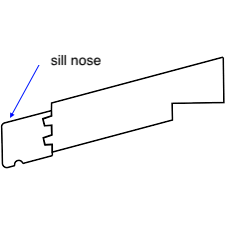 Sill Diagram Showing Sill Nose[/caption]
Sill Diagram Showing Sill Nose[/caption]
Often, the entire sill doesn’t need to be replaced, just the nose. We use an extruded PVC sill nose, meaning that it won’t rot again.
[caption id=“attachment_5467” align=“alignnone” width=“225”]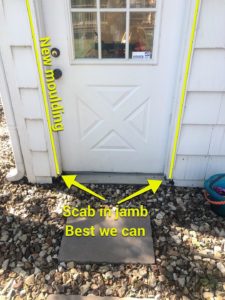 Rotted Brick Moulding on a Door[/caption]
Rotted Brick Moulding on a Door[/caption]
Moulding rots near the corners or joints on windows and near the base on doors. As with the sill noses, moulding now comes in PVC. When we replace any moulding, we use PVC so that it won’t rot again.
Soffits and Fascia
The next most common item we see is rotted fascia boards and/or soffits. The reason we see fascia rotting is generally due to a gutter issue. If there is a leak in a gutter at a joint or corner, almost always the fascia board / soffit in that area is rotted.
[gallery columns=“2” size=“medium” ids=“5469,5468”]
Siding
Every year, we replace many siding panels. Some of the siding on houses in Kansas City isn’t well suited to this climate and is especially prone to rotting. Other siding we see has issues because of deferred maintenance, i.e., waiting too long between paintings.
Batten Board Siding
Batten board siding is common in Kansas City. Almost every older batten board house we look at has panels and or bats that need replaced. Boards are the 4x8 sheets of siding that sit over your home’s framing. The battens are the 1x2 or 1x3 pieces that cover the joints.
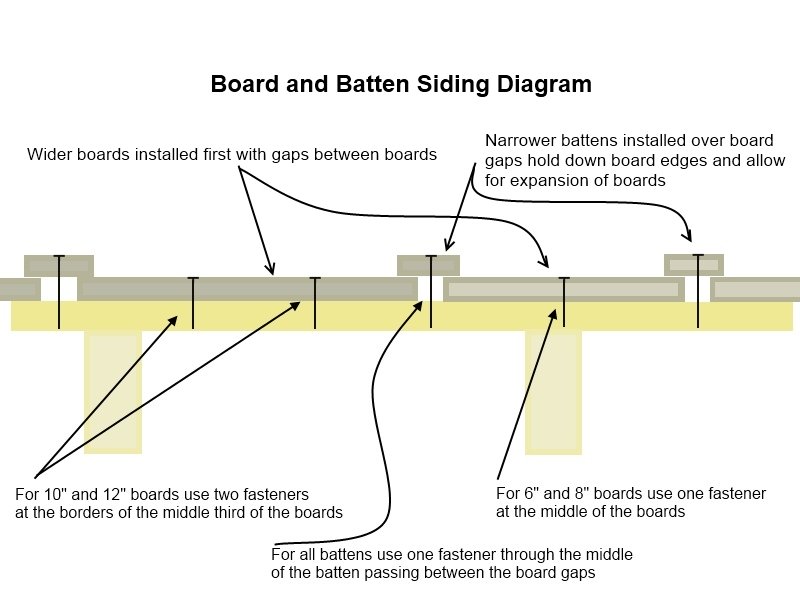
We see problems with batten board siding when other painters or home-owners caulk the edges of all the bats. Too much caulking can be as problematic as none in some cases, this being one of them. The boards are a composite of wood material, glue, and resins. If there is moisture between the boards and the sub framing and it can’t escape, over time this will rot the boards. In our experience, not caulking the edges of the battens allows this siding type to breathe and helps prevent wood rot. Caulking the edges traps moisture.
We also see issues near the bottom edge of the boards where there are bushes right up against the house. The same things is at play here. Bushes create shade and trap moisture agains the siding. The bottom edge of the siding stays saturated, and over time begins to rot. It’s best to ensure that bushes are trimmed back away from your home so adequate airflow can occur and dry any moisture.
[caption id=“attachment_5471” align=“alignnone” width=“225”]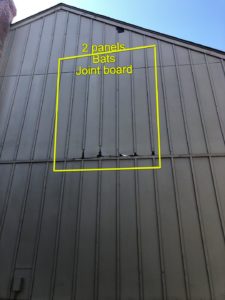 Batten Board Siding with Wood Rot[/caption]
Batten Board Siding with Wood Rot[/caption]
Lap Siding
Lap siding generally performs well if properly maintained. The most common issue we see with lap siding is rotting at the edges or at butt joints (where two pieces of siding butt up in the middle of a run). Depending on the type of siding, these joints need caulking to seal out moisture. If the caulking is maintained via regular painting, moisture penetrates and over time rots the lap siding.
This isn’t an issue with James Hardie Siding.
In rare cases, we’ve run into houses where someone caulked the bottom edge of the lap siding. This caused lots of wood rot problems. This is another situation where caulking, incorrectly applied, causes big problems. Your home is designed to shed moisture. Gravity, the constant inevitable force, makes water never run uphill. Caulking the bottom edge of lap siding essentially seals moisture into the interface between the lap siding and the sub framing and holds it there. Bottom edges of siding/trim/whatever generally aren’t to be caulked. If any moisture gets in, it will follow gravity and as long as it can escape it will.
Smart Siding
Most new construction being built is built with James Hardie Siding or LP Smart Side Siding. Some earlier generations of smart side (those between early 1990s and 2000) we see rot on. The newer smart side (mostly anything built after 2000) is a great siding material and if maintained resists rot well. Normally where we see rot on a smart side home isn’t due to a fault of the siding, but a bad design. Often it’s at the end of a gutter run where the gutter returns into the siding along a roof pitch. Water running off the roof gets between the end of the gutter and the siding. If the Kansas City roofing contractors or home builders installed the gutters before painting, that little piece of siding between the end of the gutter and the siding didn’t get painted. No paint protection plus water at every rain equals wood rot eventually.
[caption id=“attachment_5472” align=“alignnone” width=“225”]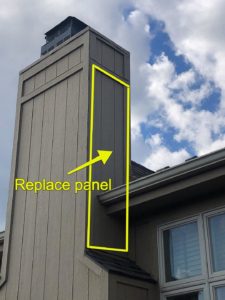 Smart Siding Panel[/caption]
Smart Siding Panel[/caption]
The only other common area we see smart side rot is the case of bushes being right up next to the house. In these scenarios the bottom edge of the smart side panel near the foundation will rot due to the bush holding moisture in near the home.
James Hardie Siding
James Hardie Siding is literally concrete. Since it is not a wood product, it does not rot. Hardie make all aesthetic styles of their siding product - lap, batten board, panel, shingle and in our opinion it’s the most durable siding product on the market. The drawback is certainly cost. It is an expensive product both to buy and install. Head over to our James Hardie page to read more.
Trim
Trim rots normally because the home hasn’t been painted in 15 to 20 years and raw wood is exposed. Raw wood exposed to moisture will eventually rot no matter what type it is. Rot on trim is preventable via proper priming and painting and also good caulking.
Summary
There of course are other strange cases we run into with wood rot repair and carpentry, but those above are 80-90% of what we deal with painting every year. Wood rot is best prevented via:
- Routine maintenance - if you see bare wood on your home, cracking caulking, peeling paint or the beginnings of some wood rot it’s best to get a painting company out there to estimate it. If caught early, it’ll be less expensive than if you defer and allow things to get worse.
- Quality siding or building materials - some building materials perform better here than others. If you have a home you love and you plan on being there a long time, it may be worth it to weight the pros/cons of replacing your siding with something that will perform better than what is currently on your home. At the least, make sure any contractor you hire, especially James Hardie Siding contractors, are using the right material for the job.
- Keep bushes away from home - trim the bushes back away from the house so at the very least air can move between the bushes and your home
- Maintain your guttering - if you see a gutter leaking, eventually that will rot your fascia board.
- Don’t caulk things that aren’t supposed to be caulked - let your home’s design and gravity do what they do. Don’t caulk bottom edges of siding or trim.
Contact Great Plains Painting for expert wood rot repair in Kansas City!